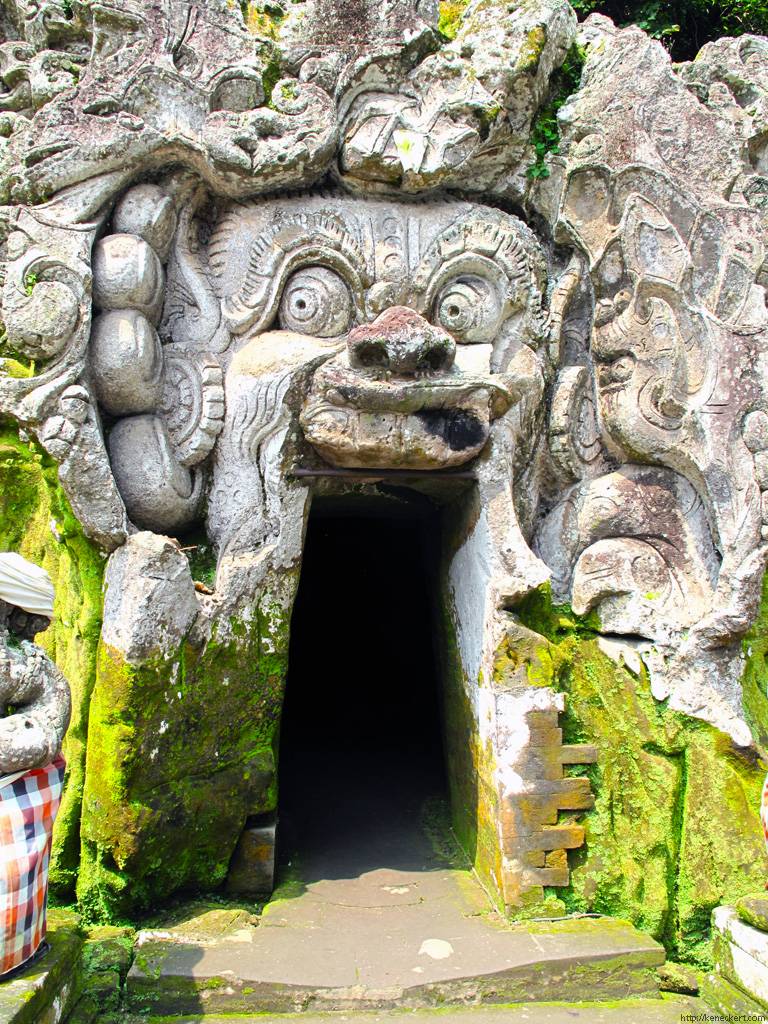The Goa Gajah Elephant Cave Temple is a significant archaeological site located on the island of Bali, Indonesia. Known for its intricate rock-wall carvings, central meditational cave, and bathing pools, it dates back to the 9th century. The site blends Hindu and Buddhist elements, reflecting the religious history of the region. It’s a popular destination for tourists and a point of interest for historians and archaeologists alike.
Get your dose of History via Email
Historical Background of Goa Gajah Elephant Cave Temple
Discovered in the 1920s, Goa Gajah’s history is shrouded in mystery. Dutch archaeologists unearthed the site, revealing its ancient significance. The temple dates back to the 9th century, attributed to the era of the Pejeng Dynasty. The cave’s creators remain unknown, but it’s thought to have been built as a spiritual place for meditation.
Over the centuries, Goa Gajah underwent various transformations. It served as a sanctuary for Buddhist monks and later, Hindu priests. The site’s religious significance is evident in the blend of Hindu and Buddhist iconography. The cave became a hermitage for those seeking spiritual enlightenment.
Despite its name, no direct link to elephants is found at the site. The name ‘Elephant Cave’ likely stems from its proximity to the Elephant River. It’s also possible that the name reflects the Hindu god Ganesh, known for his elephant head, who is revered in the region.
Goa Gajah was not just a spiritual center but also a site of historical importance. It witnessed the ebb and flow of Bali’s religious and political changes. The temple complex provides insights into the island’s past, from its early dynasties to the spread of major religions.
The site’s significance extends to the present day. It’s a UNESCO World Heritage Site, recognized for its cultural importance. Goa Gajah continues to fascinate both the spiritually inclined and the historically curious, offering a window into Bali’s rich past.
About Goa Gajah Elephant Cave Temple
Goa Gajah stands out for its unique architectural features. The facade of the cave features a menacing mouth, thought to ward off evil spirits. The cave itself is a T-shaped structure, carved into a rock face. Inside, visitors find a statue of the Hindu god Ganesha and a worship area dedicated to the Hindu god Shiva.
The complex includes bathing pools, adorned with fountains that depict Hindu angels. These pools were not merely for bathing but also for ritual purification. The water is considered holy, with spiritual significance for those who visit the temple.
The construction of Goa Gajah used local stone, carved meticulously by hand. The builders employed a combination of natural rock and man-made materials. This blend showcases the ingenuity and craftsmanship of the temple’s creators.
Architectural highlights include the relief carvings that cover the walls. These carvings depict various scenes and figures from Hindu mythology. They are a testament to the artistic talent of the time and provide insight into the religious narratives prevalent during the temple’s construction.
Despite its age, Goa Gajah has withstood the test of time. The temple’s preservation allows visitors to step back into history. It offers a tangible connection to the island’s ancient cultural practices and architectural prowess.
Theories and Interpretations
Several theories surround the purpose of Goa Gajah. Most agree it was a place for meditation and spiritual practice. The cave’s design, with its narrow passageways and central meditation chamber, supports this theory.
There are mysteries about the site, such as the exact origins of its name. While the ‘elephant’ connection is debated, some suggest it’s linked to the nearby river or the Hindu deity Ganesh. The true reason remains a topic of speculation.
Interpretations of the reliefs and sculptures have been matched to historical records. They reflect the Hindu and Buddhist beliefs that influenced Bali. The site’s iconography is a blend of these two major religions, which coexisted on the island.
Dating of the site has been carried out using relative dating methods. These include comparing architectural styles and inscriptions with other known historical artifacts. Carbon dating has not been extensively used, as it requires organic material, which is scarce at the site.
Theories about Goa Gajah continue to evolve as new discoveries are made. Each finding adds a piece to the puzzle of Bali’s history. The site remains an active subject of research, with scholars eager to uncover its secrets.
At a glance
Country: Indonesia
Civilization: Balinese (influenced by Hindu and Buddhist traditions)
Age: Approximately 1,100 years (9th century AD)
Conclusion and Sources
Reputable sources used in the creation of this article include:
- Wikipedia: https://en.wikipedia.org/wiki/Goa_Gajah

